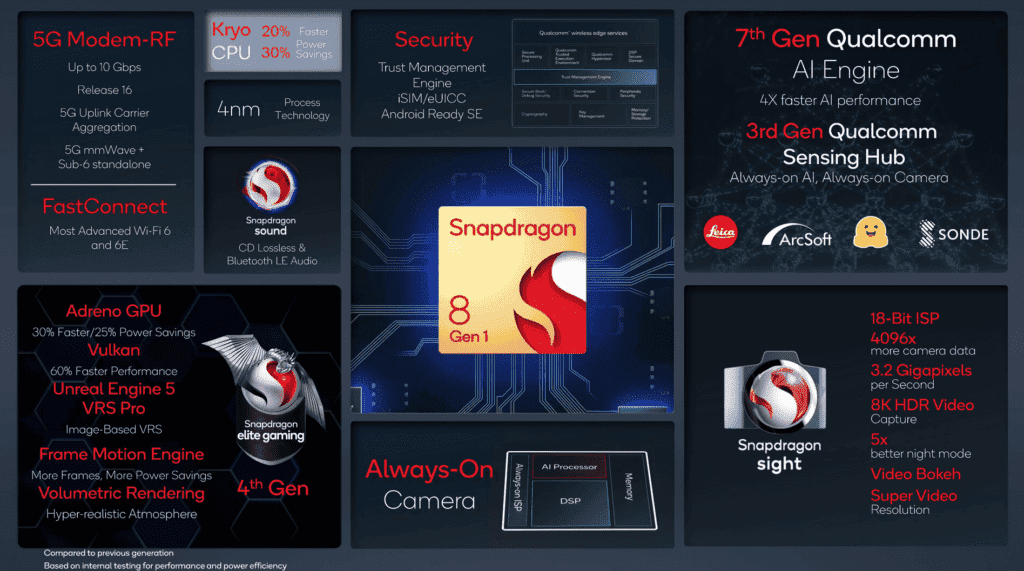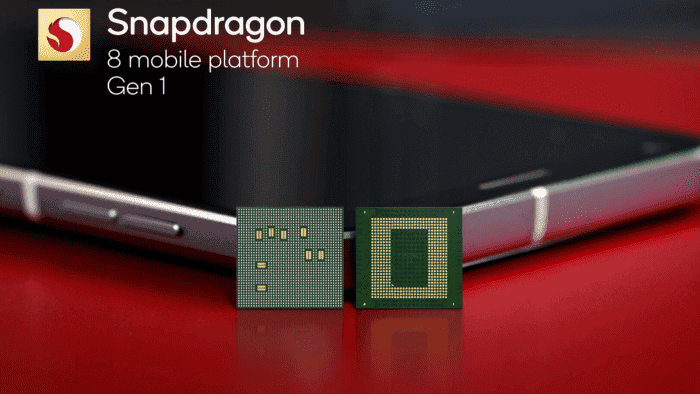A few days ago, Qualcomm released the latest generation 5G mobile processor, Snapdragon 8 Gen1. This chip does not only upgrades to the 4nm process, it also upgrades its CPU, GPU, AI, ISP, and other units. However, this time, Qualcomm did not pursue performance, the company focused on power consumption. Recall that this year’s Snapdragon 888/888 Plus suffers from poor power consumption, especially in high loads such as games.

In contrast, the GPU design of the Snapdragon 8 Gen1 is different. According to Qualcomm, the performance of this chip is 30% higher than the previous generation. Furthermore, its power consumption reduces 25%. Qualcomm usually increases its performance by about 50% from one generation to another. Reducing to 30% this time shows that the company did not pursue performance.
This time, the focus is on the optimization of the game engine, including Unity and Unreal, which are widely used on mobile phones. The performance of the increasingly popular game Vulkan with this chip shows a 60% increase. This is quite encouraging and might just be a choice chip for gamers.
Snapdragon 8 Gen1 technical specs
The CPU of this chip comes with a three-cluster design (1+3+4) and the main core is an ARM Cortex-X2 core with a 3.0 GHz clock speed. There are also three “supporting” performance cores based on the newer ARM Cortex-A710 standard. Those will run at 2.5 GHz. Finally, we have four efficiency cores that will also sport the new ARM Cortex-A510 standard running at 1.8 GHz. Overall, the new CPU will reduce power consumption by up to 30 percent. That certainly is a significant upgrade.
Furthermore, this new processor comes with an Adreno 730 GPU with a 30% performance boost and up to 25 power-saving thanks to its new architecture. Qualcomm developed three Elite Gaming features, one of which will allow developers to strike a balance between performance and power efficiency.
Furthermore, the Snapdragon 8 Gen1 brings an integrated X65 5G modem. It offers support for both sub-6 and mmWave operations. It can deliver theoretical peak speeds of 10 Gbps. For the first time, it also supports carrier aggregation for the uplink. Local connectivity enjoys Wi-Fi 6 and 6E support, plus improvements to Bluetooth.
Qualcomm also ensures top-notch security with its new flagship SoC. There is a new Trust Management Engine. It will sit below the hypervisor standard. The new Engine will remain secure even if the security zones above it are compromised.
As of now, there is no practical comparison between this chip and its main competitor, Dimensity 9000. By Q1 2022, we will have smartphones with both chips and there will be proper comparisons to ascertain which is more powerful.
Follow Gizchina.com on Google News for news and updates in the technology sector.





